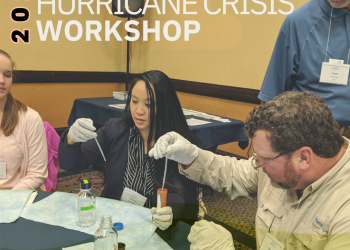The Centers for Disease Control and Prevention announced an update to the Blood Lead Reference Value (BLRV) from 5.0 micrograms per deciliter (μg/dL) to 3.5 (μg/dL) in children.
CDC also published an MMWR article on the update, which can be found here.
Despite the overall decline of blood lead levels over time, lead exposure remains a significant public health concern for children because of persistent lead hazards in the environment. Even low levels of lead in blood have been shown to affect IQ, ability to pay attention, and academic achievement. There are still millions of locations throughout the United States with lead hazards and large numbers of children at risk for lead exposure. Significant disparities in exposure and health outcomes continue to exist across racial, ethnic, and socioeconomic status.
CDC’s Childhood Lead Poisoning Prevention Program works to reduce the number of children with elevated blood lead levels and eliminate blood lead level disparities in the United States. The program’s core strategies include strengthening blood lead testing and reporting, strengthening surveillance, strengthening linkages of lead-exposed children to recommended services, and strengthening targeted, population-based interventions. For the past 30 years, CDC has provided funding and technical assistance to implement state and local childhood lead poisoning prevention programs. Between FY 2013 and FY 2018, CDC-supported states and localities tested over 16.6 million children under age six and identified over 560,000 children with elevated blood lead levels who were referred to services to address their exposures. CDC remains committed to eliminating childhood lead poisoning as a public health problem for all children.
In 2012, CDC introduced the concept of a blood lead “reference value” to identify children with higher levels of lead in their blood compared to most children, based on the 97.5th percentile of the blood lead distribution in U.S. children ages 1–5 years from the most recent two cycles of data from the National Health and Nutrition Examination Survey (NHANES). At that time, the BLRV for children corresponding to the 97.5th percentile was established at 5 micrograms per deciliter (µg/dL). CDC reviewed the most recent data derived from the 2015-2018 NHANES cycles and determined that the current 97.5th percentile is 3.5 μg/dL. The Lead Exposure and Prevention Advisory Committee (LEPAC) unanimously voted on May 14, 2021 in favor of updating the reference value to 3.5 μg/dL.
The BLRV is not a clinical reference level defining an acceptable range of blood lead levels in children nor is it a health-based toxicity threshold. The BLRV is used as a screening tool to: (1) identify children who have higher levels of lead in their blood compared with most children, and (2) assess the effectiveness of prevention efforts.
By lowering the BLRV to 3.5 μg/dL, children with blood lead levels between 3.5 and 5 μg/dL will now be identified as having blood lead levels higher than most other children. Updating the reference value allows CDC, federal partners, and health departments to focus resources on children with the highest lead exposure compared to most children in that age range to reduce blood lead levels and identify sources of exposure. By paving the way for early intervention and the prevention of additional exposure and associated harm, updating the BLRV supports the Administration’s commitment to health equity and addressing environmental justice.
CALL TO ACTION
CDC would like state and local health departments to:
- Formally adopt the updated BLRV of 3.5 μg/dL.
- Publicly promote the BLRV as a way to identify children with BLLs that are higher than most U.S. children’s levels.
- Encourage providers to perform CDC’s recommended actions based on the BLL.
- Have a secondary prevention strategy to identify and follow up children who are exposed to lead.
- Focus screening efforts on high-risk neighborhoods and children based on age of housing and sociodemographic risk factors.
- Collaborate with public health and clinical professionals to develop screening plans responsive to local conditions using local data. In the absence of such plans, universal blood lead testing is appropriate, including the Centers for Medicare and Medicaid Services requirement that all Medicaid-enrolled children be tested at ages 12 and 24 months, or at ages 24–72 months if they have not previously been screened.
More information is available on CDC’s Blood Lead Reference Value webpage.





